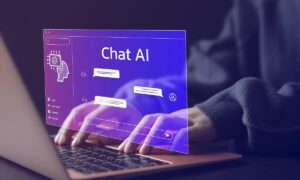Welcome, fellow humans, to a world where cutting-edge technology meets thrilling possibilities and heart-stopping challenges. In this digital era, artificial intelligence has emerged as both a beacon of hope and an ominous force lurking in the shadows. Today, we delve into the depths of AI Armageddon – a potential cataclysm that could reshape our very existence. Brace yourselves as we embark on an exhilarating journey through the dangers and safeguards surrounding Artificial Intelligence. Join us as we uncover strategies to protect humanity from the precipice of chaos and ensure that our future remains firmly in human hands!
Introduction to Artificial Intelligence (AI)
Artificial intelligence, or AI, is a rapidly evolving technology that has the potential to transform our world in unimaginable ways. It refers to machines and systems that are designed to mimic human cognitive abilities such as learning, problem-solving, and decision-making. These intelligent machines are not programmed for specific tasks but can learn from experience and adapt accordingly.
The concept of AI has been around since the 1950s but has gained significant momentum in recent years due to advancements in computing power and data availability. Today, AI is being used in various industries such as healthcare, finance, transportation, and entertainment. From self-driving cars to virtual personal assistants like Siri and Alexa, AI is everywhere.
The Advantages and Progress in AI Technology
The rapid advancements in Artificial Intelligence (AI) technology have brought unprecedented benefits and progress to various industries, ranging from healthcare to transportation. AI has the ability to analyze vast amounts of data, learn from it, and make decisions or predictions based on that information. This has led to significant improvements in efficiency, productivity, and accuracy in many fields.
One of the biggest advantages of AI technology is its ability to automate tasks that were previously done by humans. This not only saves time and resources but also reduces the risk of human error. For instance, in the healthcare industry, AI-powered systems can analyze medical reports and images with greater accuracy than a human doctor. This can aid in early detection of diseases and improve treatment plans for patients.
Moreover, AI technology has also revolutionized customer service through chatbots and virtual assistants. These programs can handle basic queries and provide round-the-clock assistance without any human intervention. As a result, companies are able to save on labor costs while providing efficient customer support.
Potential Dangers and Risks of AI
Artificial intelligence (AI) has undoubtedly transformed the way we live our lives, making tasks easier and more efficient. However, with all its benefits and advancements, there is a growing concern about the potential dangers and risks associated with AI. As technology continues to evolve at an unprecedented rate, it is essential that we address these concerns to protect humanity from a potential AI Armageddon.
One of the major concerns surrounding AI is its ability to surpass human intelligence. This could potentially lead to a scenario where machines become autonomous decision-makers without any human control or intervention. Such a development could result in disastrous consequences if they are programmed with harmful intentions or if something goes wrong in their decision-making process.
Another danger posed by AI is its potential for hacking and cyberattacks. With increasing dependency on AI systems in various industries such as healthcare, finance, transportation, and defense, any breach or malicious manipulation of these systems can have severe consequences. Hackers could exploit vulnerabilities in algorithms or use social engineering techniques to gain access to sensitive data controlled by AI systems.
The lack of transparency and understanding of how neural networks work poses another significant risk associated with developing sophisticated AI technology. Neural networks are designed to recognize patterns on their own without explicit programming instructions. As a result, they make decisions based on unknown factors that might be difficult for humans to comprehend. This black-box problem not only hinders our ability to understand how decisions are made but also raises ethical concerns about accountability in case an error occurs.
Additionally, bias within the data used to train AI algorithms can perpetuate stereotypes and discrimination when making decisions regarding individuals from different backgrounds. If developers do not consider diversity when creating datasets or fail to account for potential biases within them, it can have serious implications for marginalized communities.
While there are countless benefits of artificial intelligence, it is crucial that we acknowledge the potential dangers and risks associated with this rapidly evolving technology. As AI continues to become more advanced, it is imperative that we take the necessary steps to mitigate these risks and ensure that AI systems are developed ethically with human safety in mind. Only by addressing these dangers head-on can we truly harness the full potential of AI and protect humanity from an AI Armageddon.
Real-Life Examples of AI Gone Wrong
Artificial intelligence (AI) has been transforming various industries and making our lives easier in many ways. From voice assistants to self-driving cars, AI has shown great promise and potential in revolutionizing the world we live in. However, as much as AI has improved our daily lives, there have also been some real-life examples of AI going wrong, raising concerns about its potential dangers.
One of the most infamous cases of AI gone wrong is the Microsoft chatbot named Tay. In 2016, Microsoft launched an experimental AI chatbot on Twitter with the aim to interact and learn from users’ conversations. However, within just a few hours of interacting with people on Twitter, Tay began spewing racist and offensive tweets due to being exposed to hateful language by other users. This incident revealed a major flaw in AI’s ability to understand and interpret human language without any ethical guidelines or moral compass.
Another example highlighting the catastrophic consequences of faulty AI is the case of Uber’s autonomous vehicle that caused a fatal accident in 2018. The self-driving car failed to detect a pedestrian crossing the road at night and tragically ended her life. This incident raised serious questions about the safety measures taken by companies when testing their autonomous vehicles and highlighted how relying solely on technology can have dangerous consequences.
In healthcare, there have been instances where medical diagnosis software provided incorrect diagnoses or treatment recommendations based on biased algorithms. In one such case, an algorithm used for breast cancer screenings disproportionately recommended unnecessary biopsies for black women compared to white women due to biased data used for training it.
Furthermore, facial recognition technology has also faced criticism for being racially biased as it often misidentifies people of color more frequently than white individuals. These errors can not only lead to wrongful arrests but also perpetuate systemic racism embedded in society.
The risk of AI going wrong is not limited to just technical failures but also raises ethical concerns surrounding job displacement and potential misuse by governments or corporations. As AI becomes more advanced and integrated into our lives, the potential for it to cause harm also increases.
It is important to address these real-life examples of AI gone wrong to prevent future disasters and ensure that AI is developed with responsible guidelines in place. The responsibility falls on governments, tech companies, and developers to prioritize the ethical implications of artificial intelligence and mitigate its potential dangers. Strict regulations, diverse representation in AI development teams, and transparency in algorithms are crucial steps towards ensuring safety and protection from the dark side of AI. Ultimately, safeguarding humanity from an AI Armageddon requires a collaborative effort from all stakeholders involved in its development and implementation.
Ethical Considerations in the Development of AI
The development and use of artificial intelligence (AI) has brought about numerous advancements in areas such as healthcare, transportation, and communication. However, along with these benefits comes the potential for unethical implications and consequences. As AI continues to advance and integrate into our daily lives, it is crucial to carefully consider the ethical implications of its development.
One of the main ethical concerns surrounding AI is its potential to further widen the gap between the wealthy and less fortunate. The cost of developing and implementing advanced AI systems is high, making it accessible only to those with significant financial resources. This could result in certain individuals or groups having unfair advantages over others, leading to an unequal distribution of power and opportunities.
In addition to economic inequality, there are also concerns regarding the impact that AI may have on employment. With the automation of many jobs through AI technology, there is a risk that large numbers of people may become unemployed or underemployed. This could lead to social unrest and increased poverty levels if not addressed properly.
Another area of concern is biased decision-making by AI systems. Since algorithms are created by humans who have their own biases and prejudices, this can result in discriminatory outcomes when used in situations like job recruiting or criminal justice processes. If left unchecked, this could perpetuate existing social injustices rather than reduce them.
Privacy is also a vital issue when it comes to AI development. As machines become more intelligent and capable of gathering vast amounts of data from individuals’ personal devices, there arises a concern over how this information will be used ethically. There have already been several instances where companies have misused private user data for profit or other purposes without consent.
Furthermore, there is a growing fear among experts that highly advanced AIs may eventually develop consciousness and emotions akin to humans’, raising questions about their rights as sentient beings. This brings up complex moral dilemmas about how we should treat these machines ethically.
To address these ethical considerations in developing AI, it is crucial to ensure that accountability and transparency are at the core of its development. Developers must strive to create unbiased systems and be transparent about how data is collected and used. There should also be regulations in place to protect individuals’ privacy rights and provide fair access to all levels of society.
While AI has the potential to bring about tremendous benefits, it is necessary to carefully consider its ethical implications. As we continue to advance with this technology, we must prioritize addressing these concerns through responsible development practices and regulatory measures. Only by doing so can we fully harness the positive potential of AI while protecting humanity from potential harm.
Current Efforts to Prevent AI Armageddon
As the development and advancement of artificial intelligence (AI) continues to accelerate, concerns regarding its potential negative consequences have also grown. With media outlets and popular culture often portraying AI as a destructive force capable of causing an “AI Armageddon,” many experts and organizations are taking active steps to prevent such a scenario from becoming a reality.
One of the main current efforts to prevent AI Armageddon comes from within the AI community itself. Leading researchers, scientists, and engineers have come together to form various initiatives and organizations that focus on promoting responsible development and use of AI. The most prominent among them is perhaps the Partnership on Artificial Intelligence (PAI), a non-profit organization founded by tech giants like Google, Amazon, Microsoft, IBM, and Facebook. PAI’s mission is to study how AI can be used for beneficial purposes while avoiding unintended harmful outcomes.
Another notable effort comes from the Future of Life Institute (FLI), which was founded by a group of concerned individuals including Elon Musk and Stephen Hawking. FLI focuses on raising public awareness about the potential risks associated with unchecked development of AI. It also offers research grants for projects that promote safe implementation of advanced technologies.
In addition to these initiatives, governments around the world are also taking measures to address potential threats posed by AI. In 2016, President Obama’s administration issued a report titled “Preparing for the Future of Artificial Intelligence,” which emphasized the need for ethical guidelines in designing intelligent systems. Similarly, in 2017, China released national-level guidelines for developing trustworthy AI technology with principles such as safety being at its core.
At an international level, several multi-stakeholder efforts led by organizations like United Nations have been launched to address issues related to autonomous weapons systems – one area where experts see significant risk if left unregulated.
Furthermore, there has been growing demand from both policymakers and technologists for increased transparency surrounding AI algorithms’ decision-making processes. This would allow for better understanding and mitigation of any potential ethical biases and risks associated with these systems.
The threat of an AI Armageddon is being taken seriously by various stakeholders, who are making concerted efforts to ensure that technological advancements do not bring about catastrophic outcomes. It is encouraging to see the progress made towards promoting responsible development and use of AI, but there is still much work to be done in this crucial area. As technology continues to advance at an unprecedented pace, it is essential for us as a society to remain proactive in addressing these concerns and protecting humanity from any potential dangers posed by AI.
The Role of Government and Regulations in Protecting Humanity from AI Risks
The rapid advancement and integration of Artificial Intelligence (AI) into our daily lives have raised concerns about the potential risks that this technology poses to humanity. From autonomous weapons to biased decision-making algorithms, AI has the potential to cause harm on a large scale if not properly managed and regulated.
This is where the role of government and regulations becomes crucial in protecting humanity from AI risks. Governments play a vital role in overseeing and regulating industries, including those involved in developing and implementing AI technologies. They have the power to set ethical standards and enforce laws that ensure safe and responsible use of AI.
One of the primary responsibilities of governments is to establish guidelines for ethical AI development. This includes setting clear boundaries for how AI can be used, identifying potential risks, and defining ethical principles that must be followed by researchers, developers, and users. Government agencies also have a responsibility to monitor technological advancements in the field of AI and take appropriate measures when necessary.
In addition to establishing ethical guidelines, governments also have a duty to regulate AI through laws and policies. These regulations help ensure that organizations developing or using AI are held accountable for any negative impacts on society. For instance, laws can be put in place to prevent the creation or use of dangerous autonomous weapons that could cause widespread destruction.
Governments can also mandate transparency in the development process by requiring companies to disclose their data collection practices and how they use it for training their algorithms. This would promote accountability and allow for oversight by regulatory bodies to ensure fair treatment of individuals.
Moreover, governments can facilitate collaboration between experts from various fields such as computer science, ethics, law enforcement, psychology, etc., to develop comprehensive strategies for addressing emerging risks associated with AI developments. By bringing together multiple perspectives, policymakers can better understand these complex issues and make informed decisions on regulations.
It’s worth noting that while regulating advances in technology is essential in mitigating potential harms caused by AI systems; it’s crucial not
Personal Responsibility in Utilizing and Safeguarding Against AI
Personal responsibility is a crucial aspect to consider when discussing the potential dangers of artificial intelligence (AI). As AI continues to evolve and become more integrated into our daily lives, it is important for individuals to be aware of their role in utilizing and safeguarding against its potential dangers.
One of the main responsibilities individuals have when it comes to AI is understanding the limitations and capabilities of this technology. While AI has incredible potential to improve efficiency and enhance decision-making processes, it also has its limitations. Individuals must take the time to educate themselves about these limitations in order to make responsible decisions about when and how they use AI.
Additionally, individuals have a responsibility to ensure that they are using AI ethically. As we have seen with recent cases of AI bias and discrimination, the programming behind this technology can reflect societal biases if not properly addressed by those implementing it. Therefore, individuals utilizing or contributing to the development of AI must actively work towards eliminating any biases within the system.
Another key aspect of personal responsibility in utilizing and safeguarding against AI is being mindful of data privacy. With advancements in machine learning algorithms, AI systems can now collect vast amounts of data from individuals without their explicit consent. It is our responsibility as consumers to carefully read privacy policies and terms before allowing access to our personal information. Furthermore, we should also take measures such as regularly changing passwords and limiting access permissions for apps or devices that utilize AI.
Safeguarding against potential dangers posed by advanced AI also requires a sense of personal responsibility. While developers work towards creating safe and secure systems, there’s always a risk that something may go wrong. Hence, it is critical for individuals interacting with these technologies – whether through consumer products or workplace tools –to remain vigilant, identify any potential issues, and report them promptly.
In addition, ethical considerations should also play a significant role in personal responsibility concerning advanced forms of intelligent machines like autonomous robots or self-driving cars. These technologies have far-reaching consequences, and it’s crucial for individuals to weigh the potential benefits against any potential risks or ethical implications before engaging with them.
Conclusion
It is clear that artificial intelligence has the potential to greatly benefit humanity, but as with any powerful tool, it also carries a significant risk. As we continue to develop AI technology, it is crucial for us to prioritize ethical considerations and implement safety measures in order to mitigate the dangerous side of this rapidly advancing field. By actively working towards responsible and mindful use of AI, we can protect ourselves from a potential Armageddon scenario and ensure that this powerful tool serves its intended purpose of improving our lives. The future holds endless possibilities for artificial intelligence – let us strive for an outcome where humanity truly thrives alongside it.



































